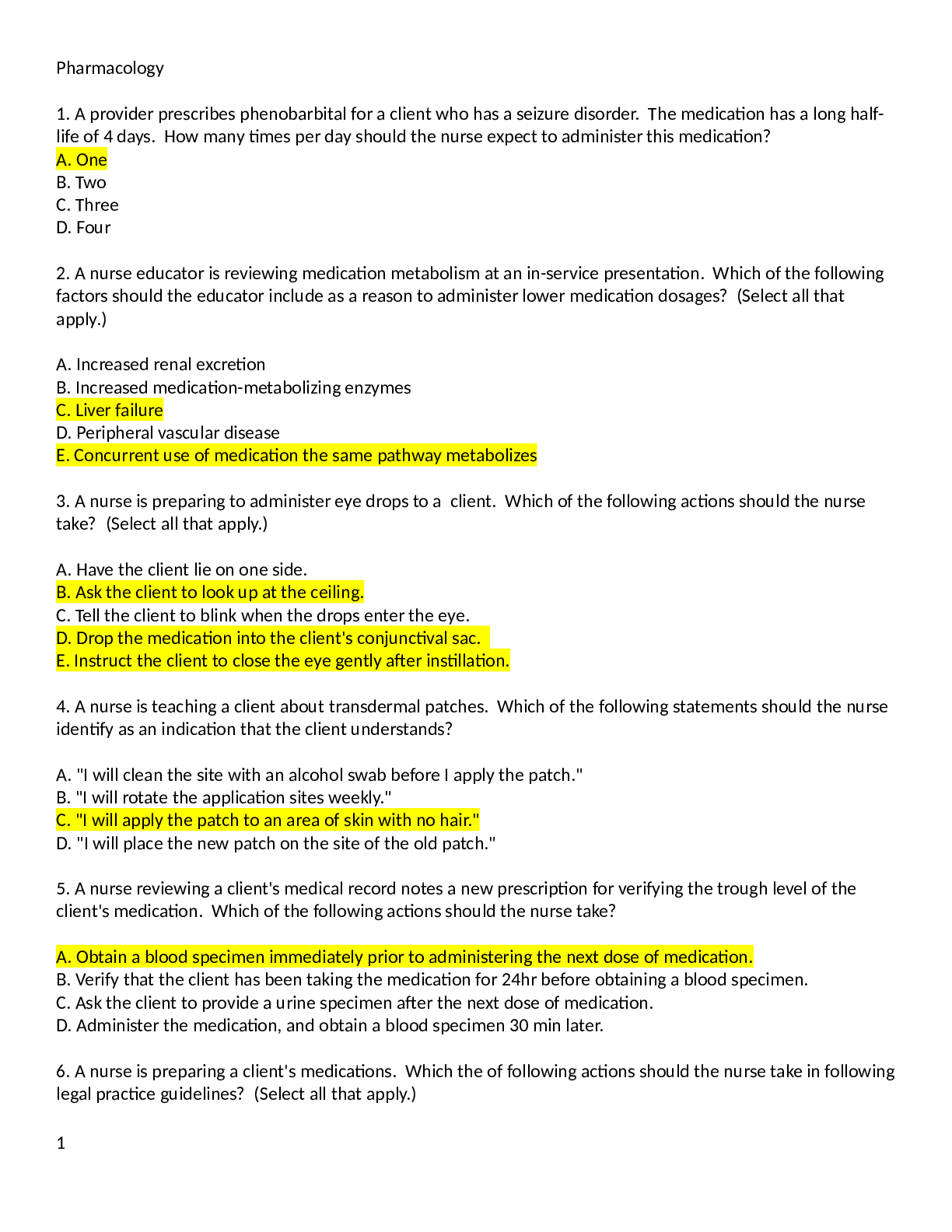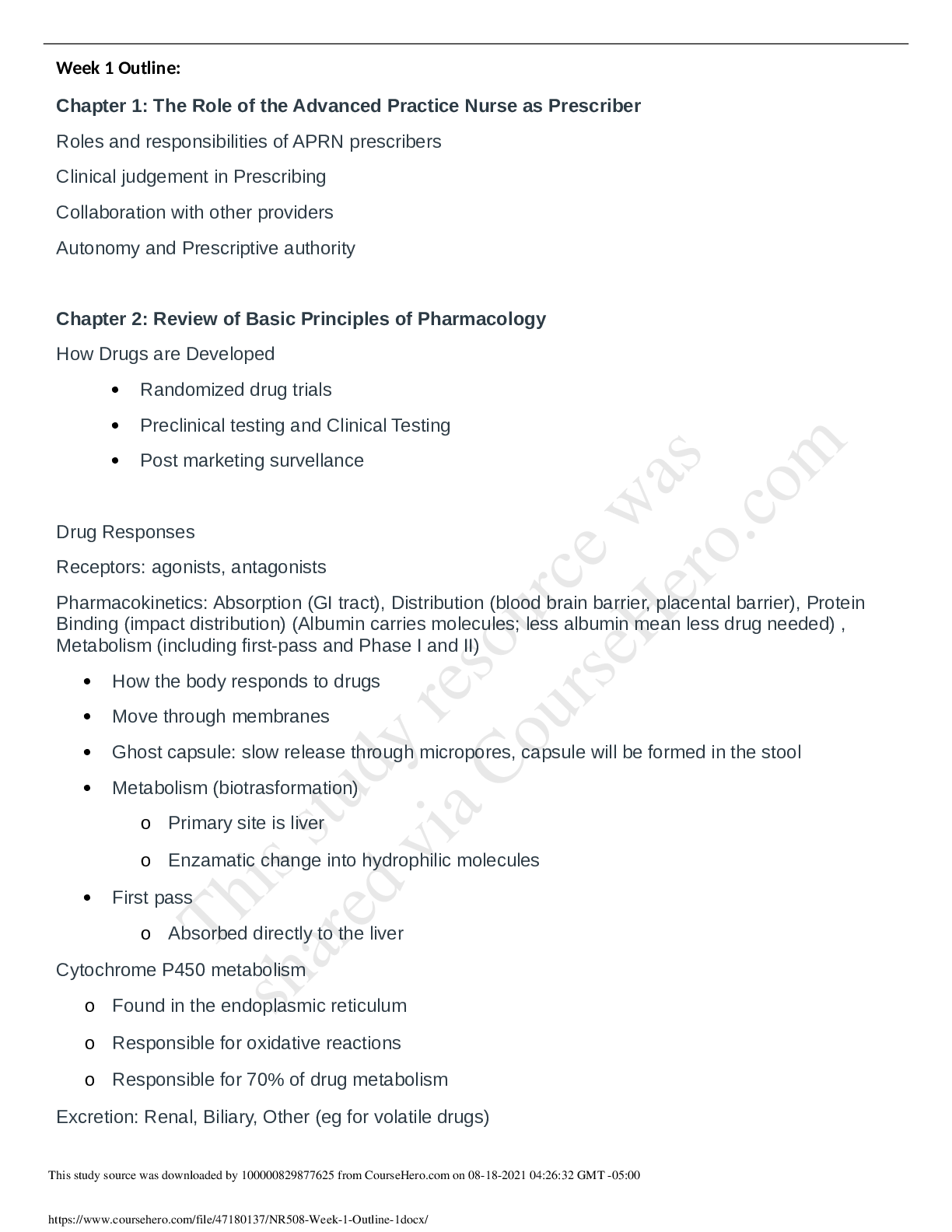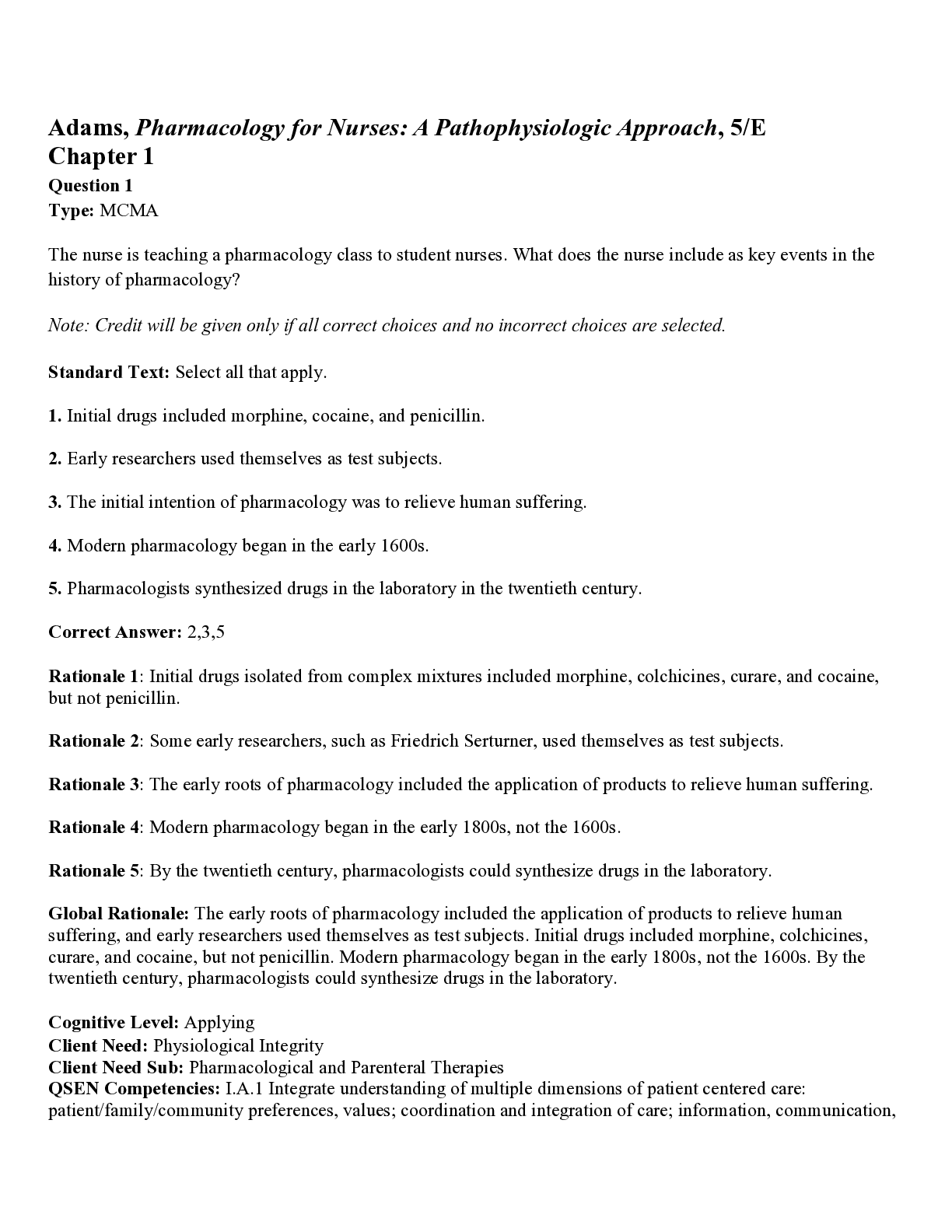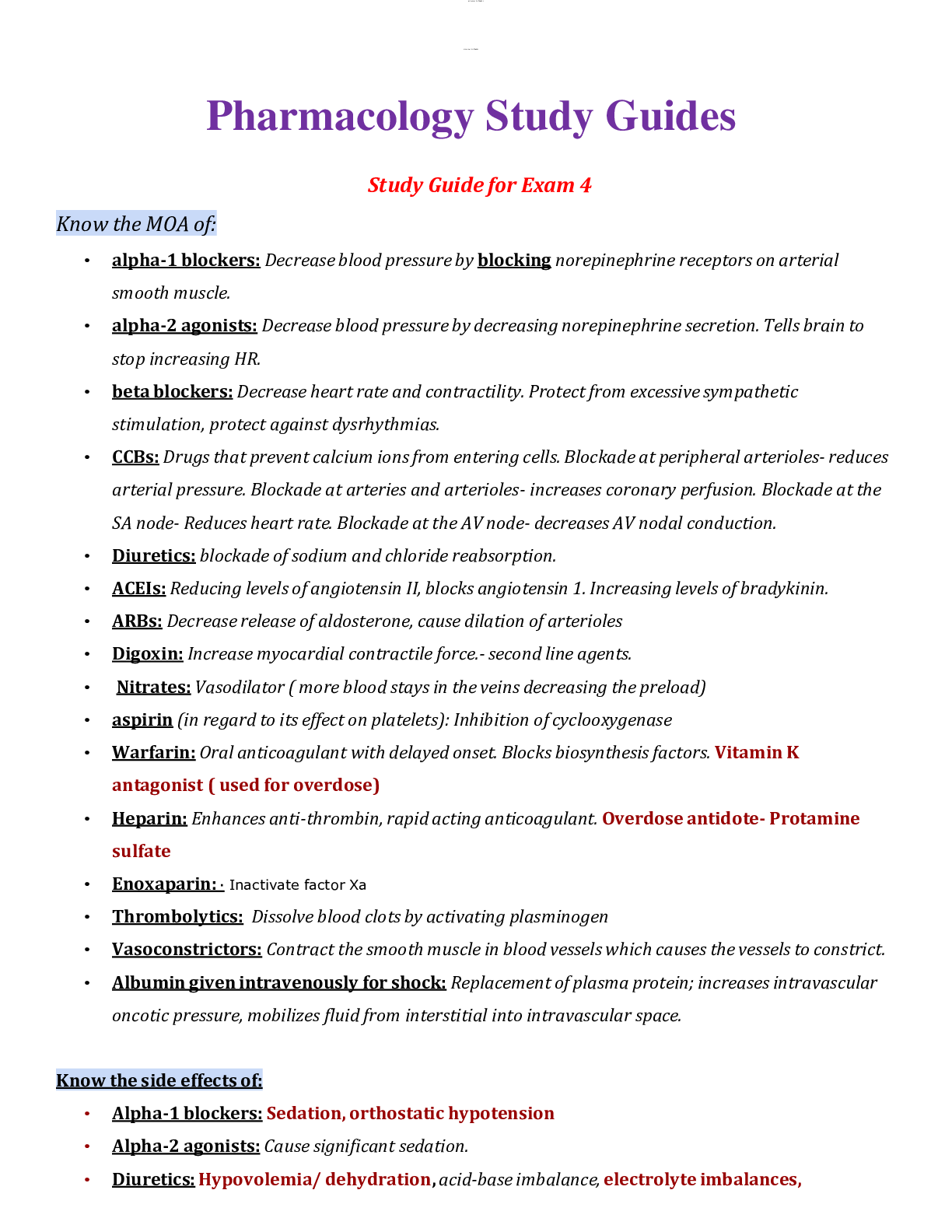*NURSING > STUDY GUIDE > NUR 2407 Pharmacology Study Guide Exam #1 (All)
NUR 2407 Pharmacology Study Guide Exam #1
Document Content and Description Below
NUR 2407 Pharmacology Study Guide Exam #1 Chapter 1: Drug Development and Ethical Considerations Drug Names- The Generic Name: is the official, nonproprietary name for the drug; this name is not o... wned by any drug company and is universally accepted. Generic names are given in lowercase letters The Brand (Trade) Name: also known as the proprietary name is chosen by the drug company and it usually a registered trademark. Brand names always begin with a capital letter. Over-the-Counter Drugs- Over the Counter (OTC): drugs have been found to be safe and appropriate for use without the direct supervision of a healthcare provider. They are available for purchase without a prescription in many retail locations. OTC drugs include vitamin supplements, cold remedies, analgesics, antacids, laxatives, antihistamines, sleep aids, nasal sprays, weight control drugs, drugs for dermatitis and fungal infections, fluoride toothpaste, corn and callous removal products, and herbal products. Chapter 2: Pharmacokinetics, Pharmacodynamics, and Pharmacogenetics Pharmacokinetics- Pharmacokinetics: . Is the process of drug movement throughout the body that is necessary to achieve drug action. The 4 processes are absorption, distribution, metabolism (or biotransformation), and excretion (or elimination). Drug Absorption: is the movement of the drug into the bloodstream after administration. Approximately 80% of drugs are taken by the mouth (enteral). For the body to utilize drugs taken by mouth, drug and solid form must disintegrate into small pieces and combined with liquid to form a solution, a process known as dissolution, in order to be absorbed from the gastrointestinal track into the bloodstream. o Unlike drugs taken by mouth parenteral drug such as eyedrops, eardrops, nasal sprays, respiratory inhalants, transdermal drugs, and sublingual drugs do not pass through the G.I. tract. o Blood flow, pain, stress, hunger, fasting, food, and pH affects drug absorption. o Drugs given intramuscularly are observed faster and muscles that have increased blood flow (e.g. deltoid) than those that do not (e.g. gluteus maximus). o Subcutaneous tissue has decreased blood flow when compared to muscles, so absorption is slower when drugs are given subcutaneously. However, drugs that are given subcutaneously have a more rapid and predictable rate of absorption than those given by mouth. o Drugs given rectally are absorbed slower than drugs administered by oral route. Absorption is slower because the surface area in the rectum is smaller than the stomach, and there are no villi. o Following absorption of oral drugs from the G.I. tract, they pass from the intestinal lumen to the liver via the portal vein. In the liver some drugs are metabolized to a in active form and are excreted, thus reducing the amount of active drug available to exert a pharmacological effect. This is referred to as The First Pass Effect. Affected to some degree by 1st pass metabolism. o Bioavailability refers to the percentage of administered drug available for activity. The bioavailability of intravenous drugs is 100%. The bioavailability of oral drugs is always less than 100% and varies based on the rate of 1st pass metabolism. Drug Distribution: distribution is the movement of the drug from the circulation of body tissues. Drug distribution is influenced by the rate of blood flow to the tissue, the drugs affinity to the tissue, and protein binding. o Protein Binding- as drugs distribute in the plasma, many bind with plasma proteins. The portion of the drug bone to protein is inactive because it is not available to interact with tissue receptors and therefore is unable to exert a pharmacological effect. The portion that remains unbound is free, active drug. Free drugs are able to exit blood vessels and reach their site of action, causing a pharmacological response. When 2 highly protein bound drugs are administered together, they compete for protein binding sites, leading to an increase in free drug being released into the circulation. In this situation it is possible for drug accumulation to occur and for toxicity to result. Another factor that may alter protein binding is low plasma protein levels, which potentially decrease the number of available binding sites and can lead to an increase in the amount of free drug available, resulting in drug accumulation and toxicity. Patients with liver kidney disease and those who are malnourished may have significantly lower serum albumin levels. Additionally, older adults are more likely to have low albumin levels, particularly if they have multiple chronic illnesses. Drug Metabolism: metabolism or biotransformation, is the process by which the body chemically changes drugs into a form that can be excreted. The liver is the primary site of metabolism. o Liver disease such as cirrhosis and hepatitis alter drug metabolism by inhibiting the drug metabolizing enzymes in the liver. When the drug metabolism rate is decreased, excess drug accumulation can occur and can lead to toxicity. o The drug half-life is the time it takes for the amount of drug in the body to be reduced by half. The amount of drug administered, the amount of the drug remaining in the body from previous doses, metabolism, and elimination affect the half-life of a drug. o By knowing the half-life, the time it takes for the drug to reach a steady state (plateau drug level) can be determined. A steady-state occurs when the amount of drug being administered is the same as the amount of drug being eliminated; a steady state of drug concentration is necessary to achieve optimal therapeutic benefit. This takes about 4 half-life’s, if the size of all doses are the same. o Loading Dose- in the case of drugs with long half-life’s, it may not be acceptable to wait for steady-state to be achieved. For example a person with seizures receiving phenytoin. The half-life of phenytoin is approximately 22 hours; if all doses of the drug were the same, steady-state would not be achieved for about 3 ½ days. By giving a large initial dose, known as a loading dose, that is significantly higher than maintenance dosing, therapeutic effects can be obtained while a steady state is reached. Drug Excretion: the main route of drug excretion, elimination of drugs from the body, is through the kidneys. Drugs are also excreted through bile, the lungs, saliva, sweat, and breast milk. The kidneys filter free drugs (in healthy kidneys, drugs bound to protein are not filtered), water-soluble drugs, and drugs that are unchanged. Pharmacodynamics- Pharmacodynamics: is the study of the effects of drugs on the body. Drugs act within the body to mimic the action of the body’s own chemical messengers. Drug response can cause a primary or secondary physiological effect or both. A drugs primary effect is the desirable response, and the secondary effect may be desirable or undesirable. Onset: is the time it takes for a drug to reach the maximum effective concentration after administration. Peak: a drugs peak occurs when it reaches its highest concentration in the blood. Duration of Action: is the length of time the drug exerts a therapeutic effect Peak Drug Level: is the highest plasma concentration of drug at a specific time, and it indicates the rate of drug absorption. If the peak is too low, effective concentration has not been reached. If the drug is given orally, the peak is usually 2 to 3 hours after drug administration. If the drug is given intravenously, the peak time is usually 30 to 60 minutes after the infusion is complete. If the drug is given intramuscularly the peak time is usually 2 to 4 hours after injection. Through Drug Level: is the lowest plasma concentration of a drug, and it measure the rate at which the drug is eliminated. Troughs levels are drawn just prior to the next dose of drug regardless of route of administration. Most drugs only require trough concentration levels to be drawn Agonist: drugs that activate receptors and produce a desired response Antagonists: drugs that prevent receptor activation and block a response. Blocking receptor activation either increases or decreases cellular action, depending on the androgynous action of the chemical messenger that is blocked. Side Effect: our secondary effects of drug therapy. All drugs have side effects. Even with correct drug dosage, side effects occur that can be predictable and range from inconvenient to severe or life-threatening. In some instances, the side effects may be desirable (e.g. using diphenhydramine at bedtime, when it side effect of drowsiness is beneficial). Chronic illness, age, weight, gender, and ethnicity all play a part in drug side effects. Adverse Drug Reactions (ADRs): are unintentional, unexpected reactions to drug therapy that occur at normal drug dosages. The reactions may be mild to severe and include anaphylaxis. Adverse drug reactions are always undesirable and must be reported and documented because they represent variances from plant therapy. Drug Toxicity: occurs when drug levels exceed the therapeutic range; toxicity may occur secondary to overdose of drug accumulation. Factors that influence drug toxicity include disease, genetics, and age. Pharmacogenetics- Pharmacogenetics: refers to the study of genetic factors that influence an individual’s response to a specific drug. Genetic factors can alter drug metabolism, resulting in either enhanced or diminished drug response. Tolerance: refers to a decreased responsiveness to a drug over the course of therapy; an individual’s drug tolerance requires a higher dosage of drug to achieve the same therapeutic response. Chapter 4: Complementary and Alternative Therapies Herbal Medicine: Chapter 8: The Nursing Process and Patient-Centered Care The Nursing Process- Assessment: gathering information from the patient about the patient’s health and lifestyle. Always perform a complete, systematic assessment of the patient’s body systems. In this assessment, the nurse asked the patient questions about illness and about the drug regimen. o Subjective Data- current health history swallowing problems (dysphasia) current concerns allergies o Objective Data- physical health assessment laboratory and diagnostic test results measurement of vital signs patient’s body language Diagnosis: is made based on analysis of the assessment data, and is determines the type of care the patient will receive. When data show a abnormality during the assessment, it can serve as the defining characteristic of a problem to support the appropriate nursing diagnosis. Common nursing diagnosis is related to drug therapy include: o pain, acute or chronic, related to surgery o confusion, acute related to an adverse reaction to a medication o health maintenance, ineffective related to not receiving recommended preventative care o knowledge, deficit related to effects of anticoagulant education o noncompliance related to forgetfulness o health management, ineffective related to lack of finances Planning: the nurse uses the data collected to set goals or expected outcomes and interventions. Goals or expected outcomes should address the problems in the patient’s nursing diagnosis. Goals are patient centered, described the specific activity, and include a timeframe for achievement and reevaluation. Implementation of Nursing Interventions: is the part of the nursing process in which the nurse provides education, drug administration, patient care, and other interventions necessary to assist the patient in accomplishing the established goals. In most practice settings, administration of drugs and assessment of the drug’s effectiveness are important nursing responsibilities. o Patient Teaching- the following are important principles to remember when teaching patients about their medications: Gen.-instruct the patient to take the drug as prescribed. Name of drug reason for taking the drug time to take the drug possible side effects possible adverse effects Side effects self-administration diet cultural considerations Evaluation: the nurse determines whether the goal and teaching objectives are being met. If the objectives and goals are not met, the nurse will revise the objectives, goals, and interventions to ensure success. If the objectives, goals, and interventions are met the nurse will document the success attained in the nursing plan of care. .....Continued.... [Show More]
Last updated: 1 year ago
Preview 1 out of 25 pages

Also available in bundle (1)

NUR 2407 Pharmacology Exam #1 & Exam #2 Study Guides
NUR 2407 Pharmacology Exam #1 & Exam #2 Study Guides|NUR 2407 Pharmacology Exam #1 & Exam #2 Study Guides
By Ajay25 2 years ago
$25
2
Reviews( 0 )
Document information
Connected school, study & course
About the document
Uploaded On
Jul 24, 2021
Number of pages
25
Written in
Additional information
This document has been written for:
Uploaded
Jul 24, 2021
Downloads
0
Views
76

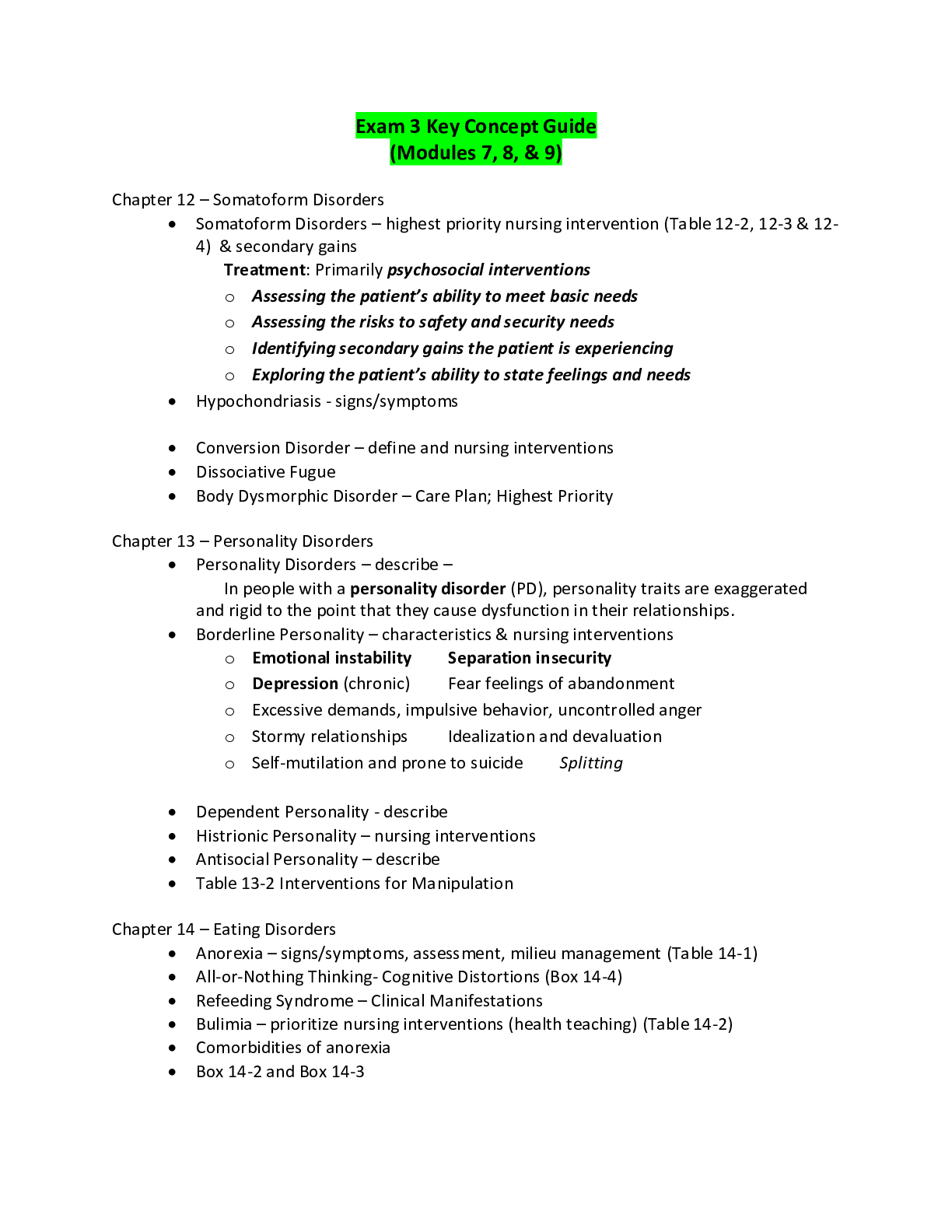


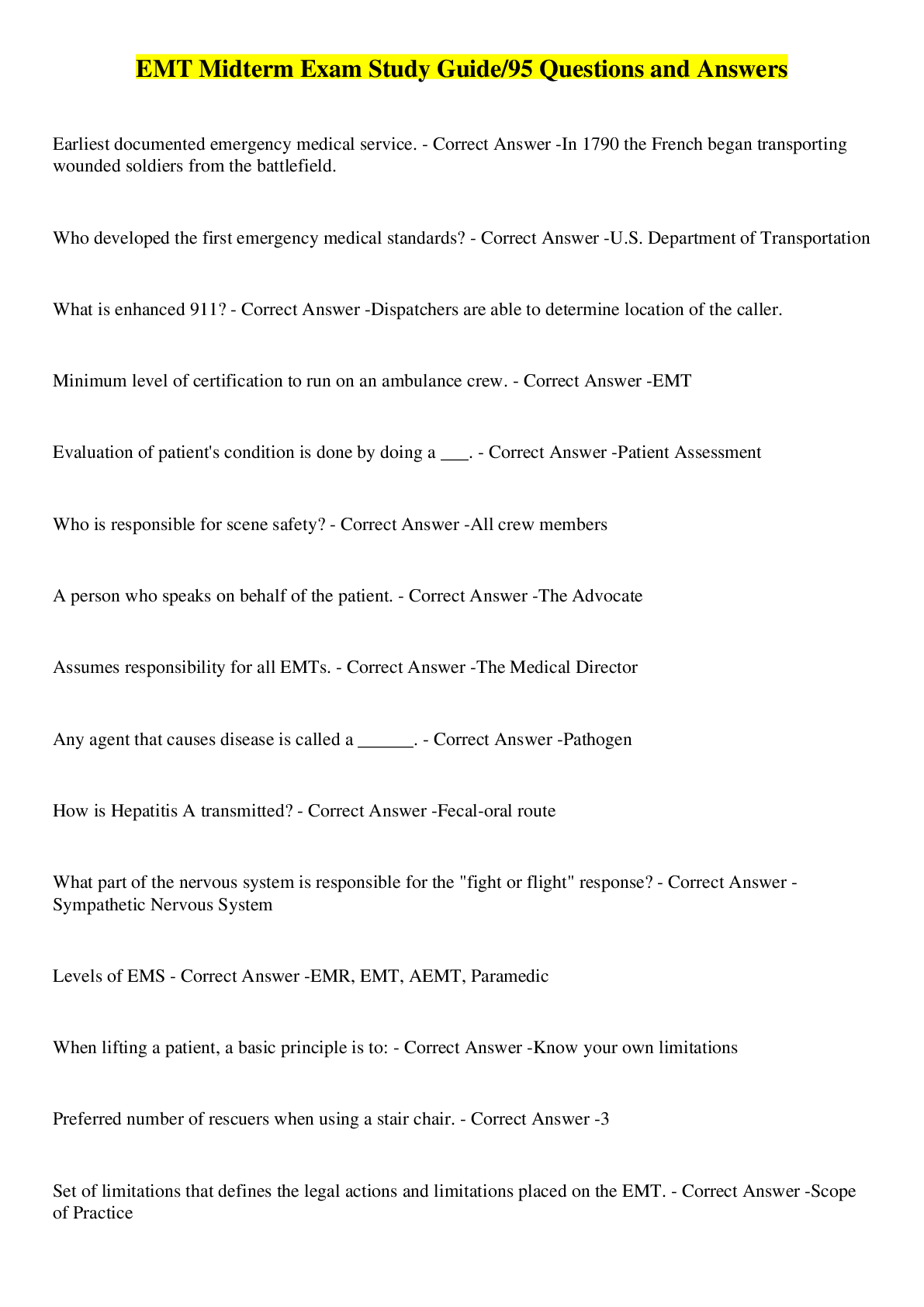
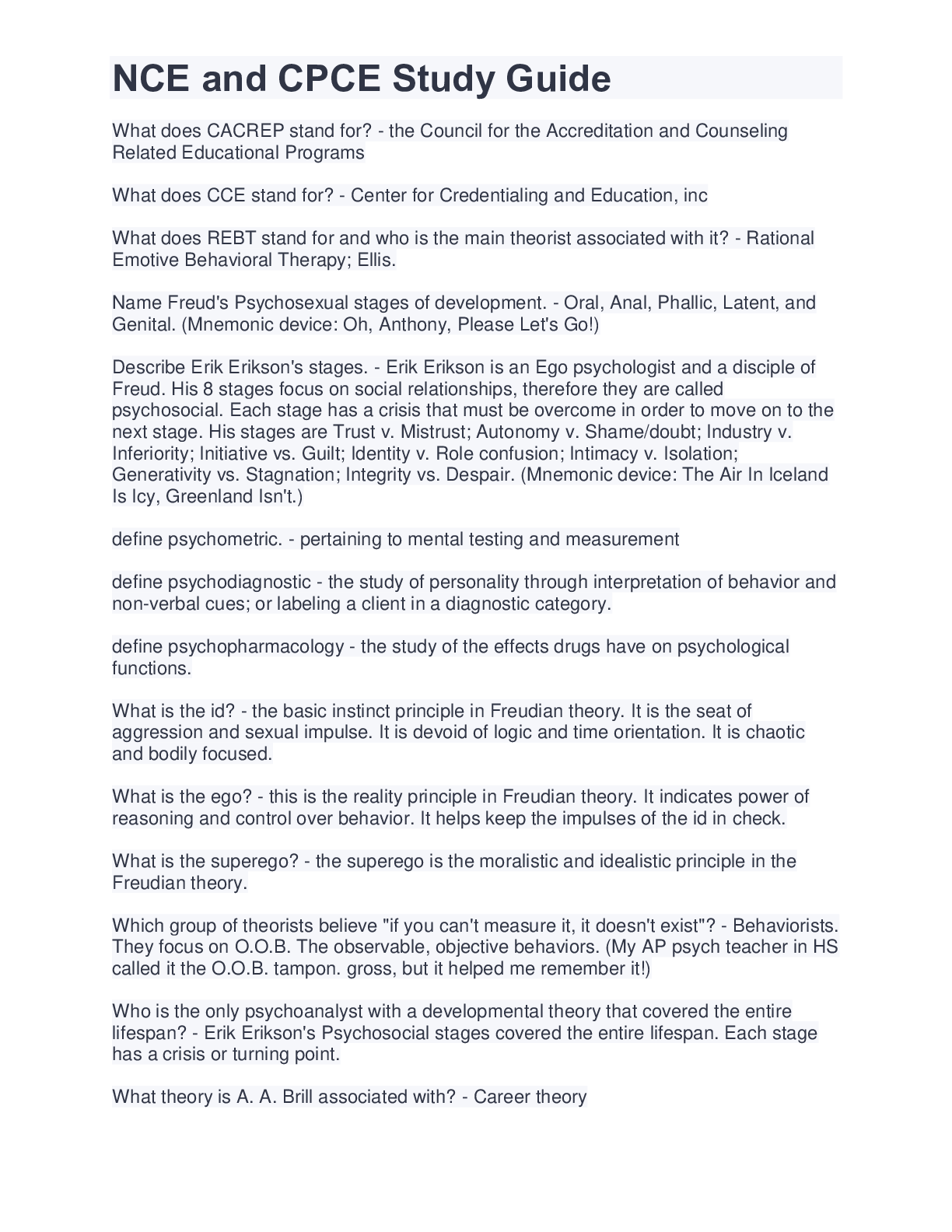
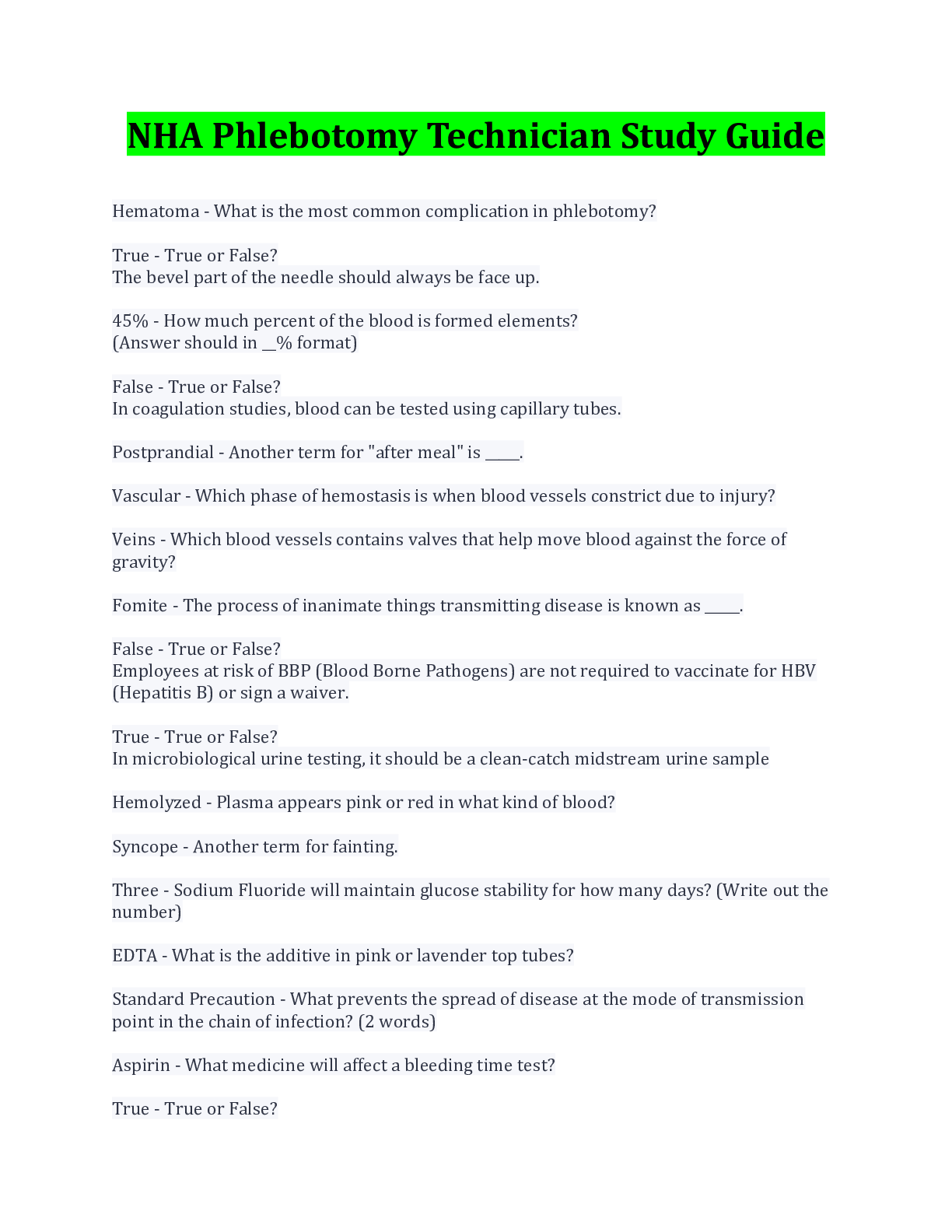
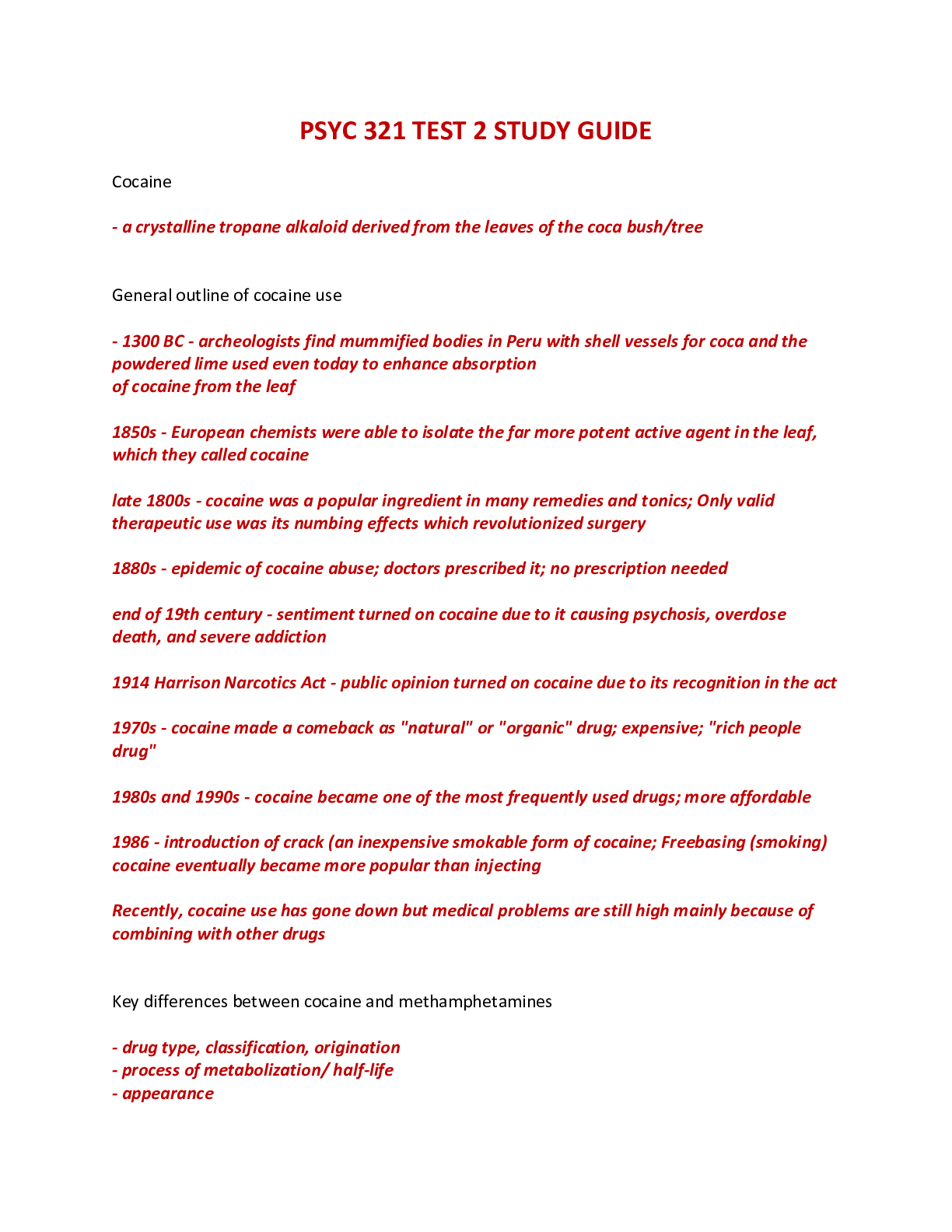
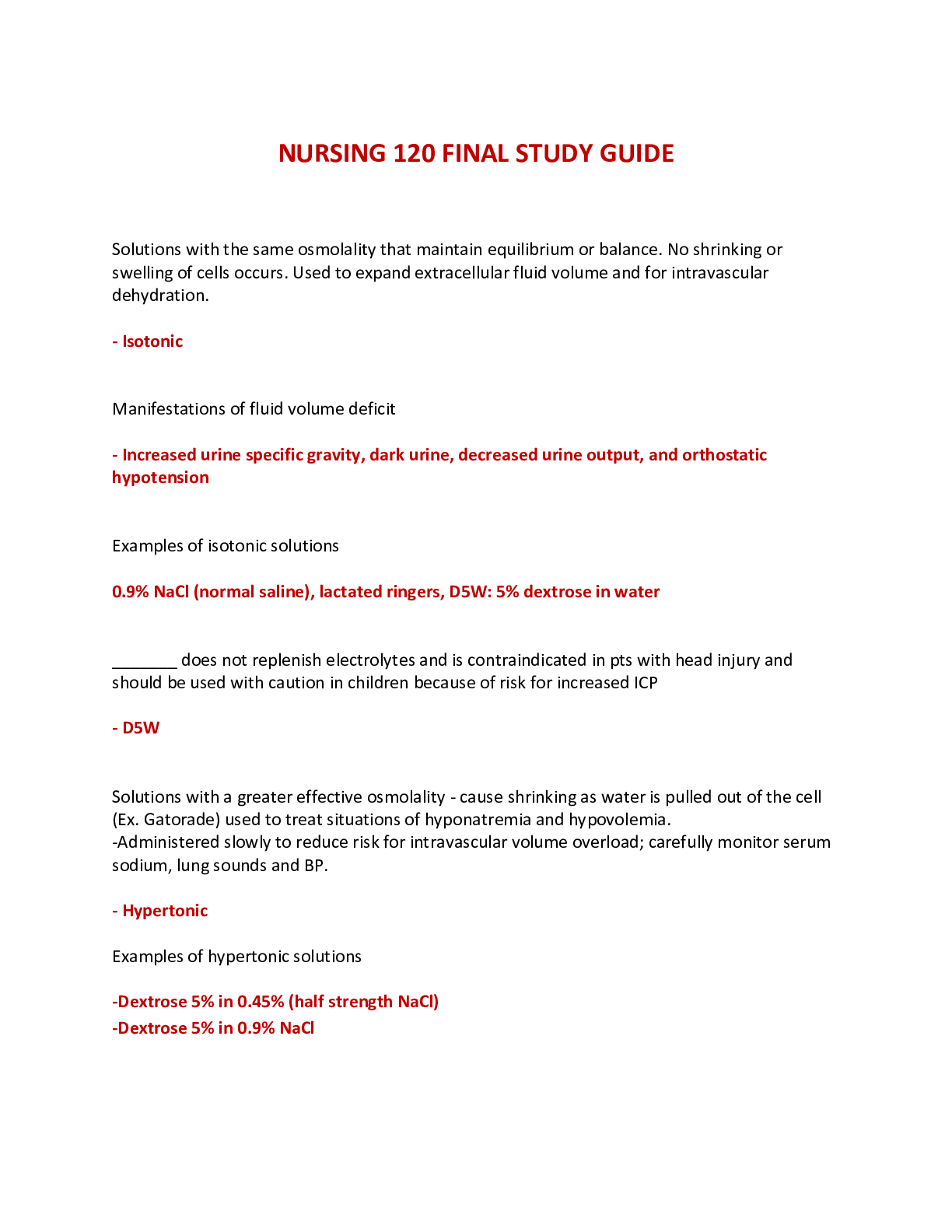
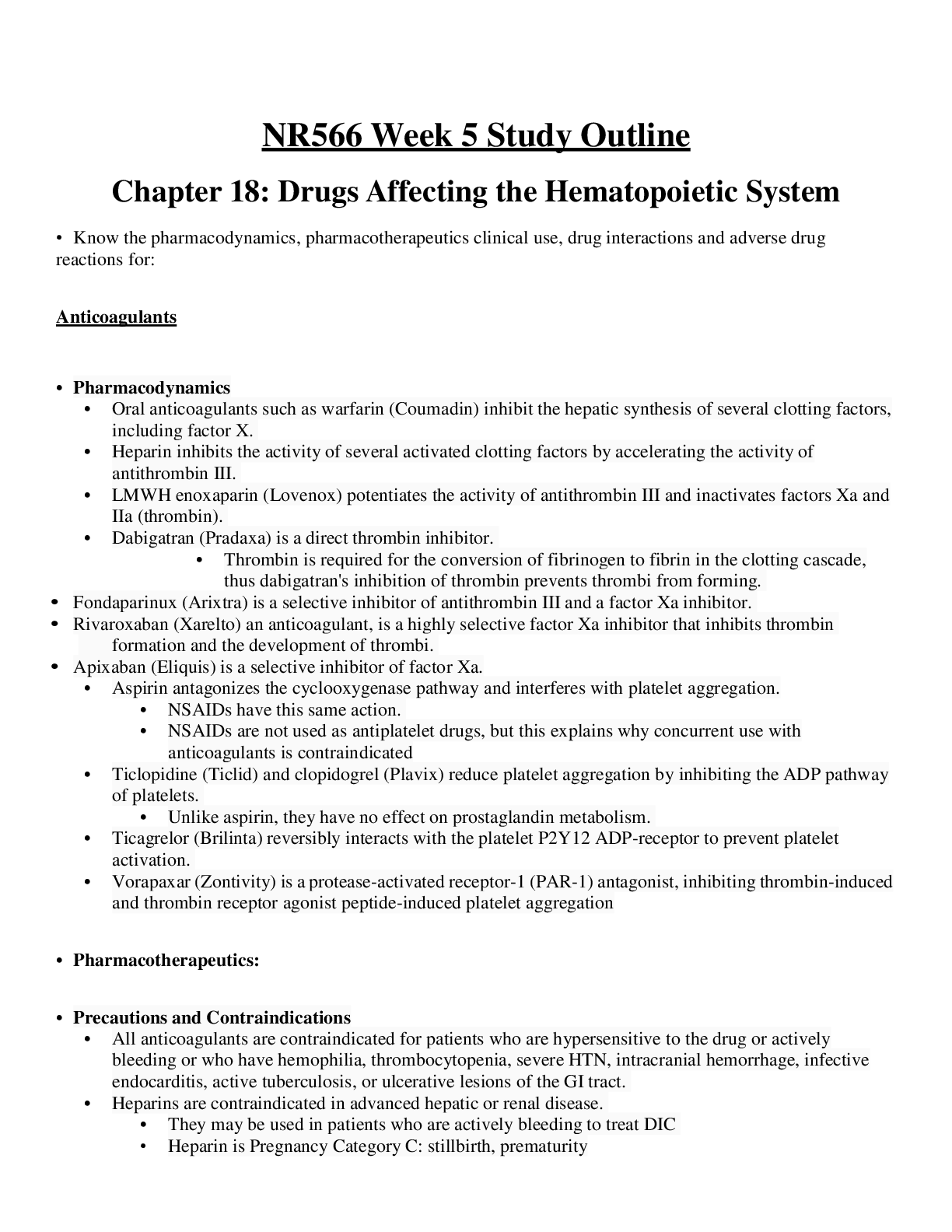
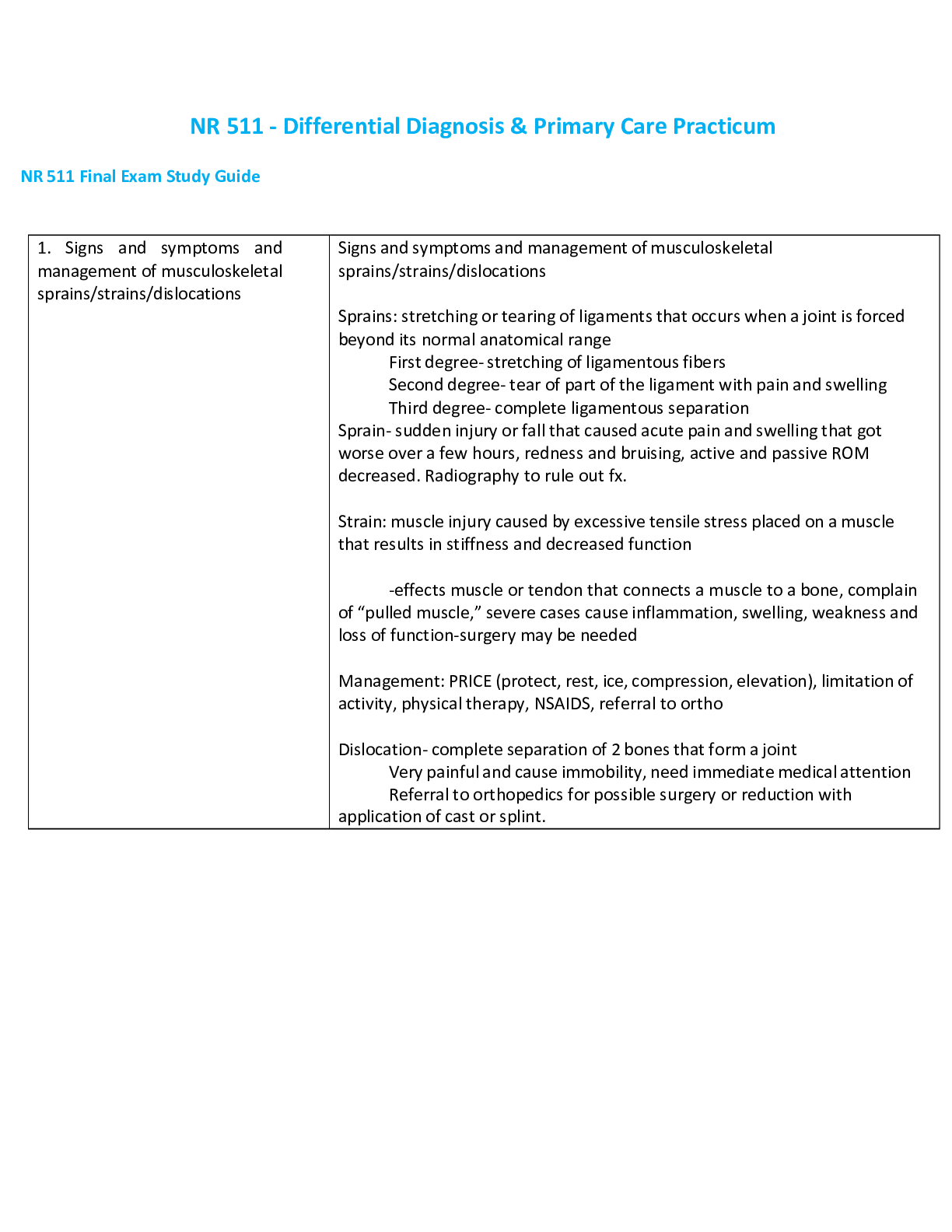
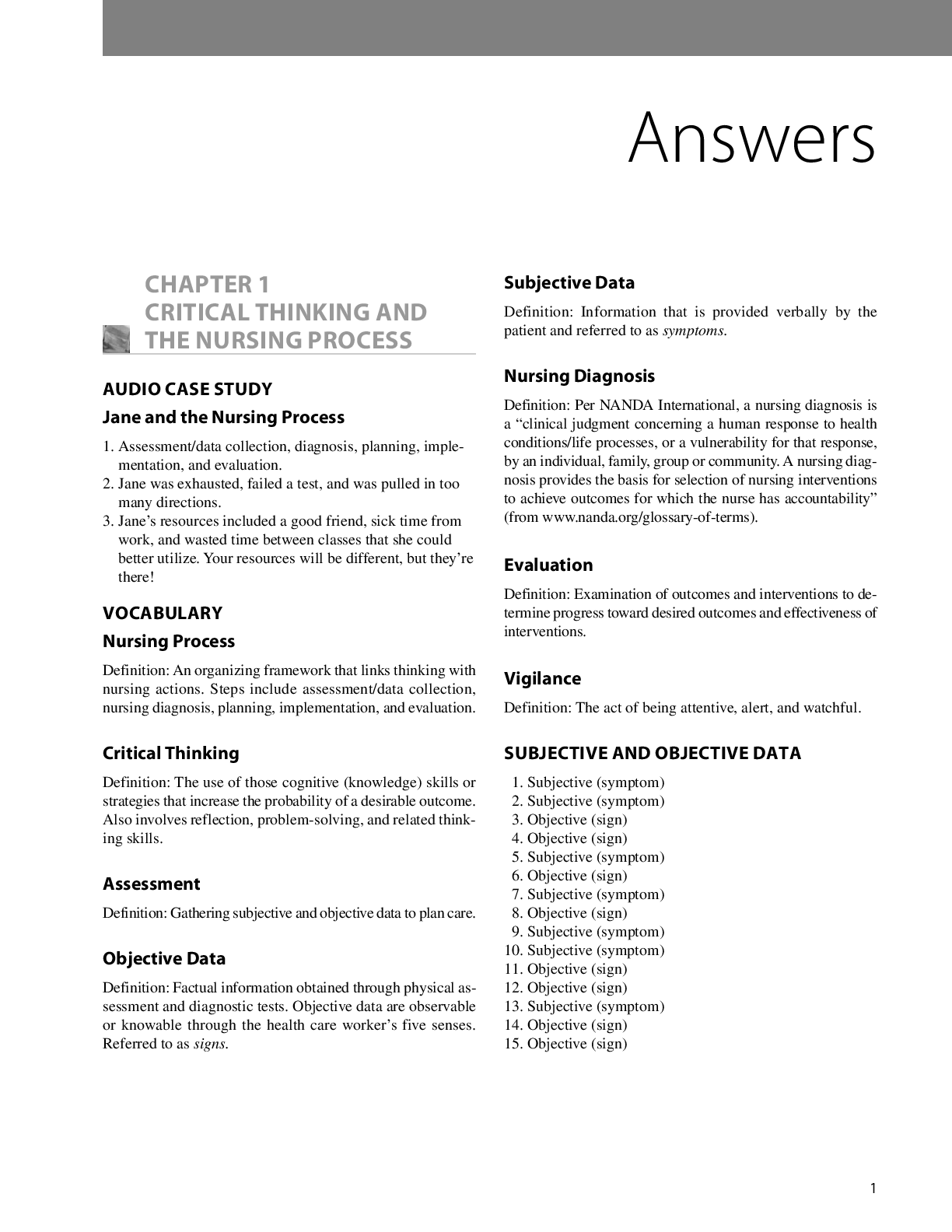
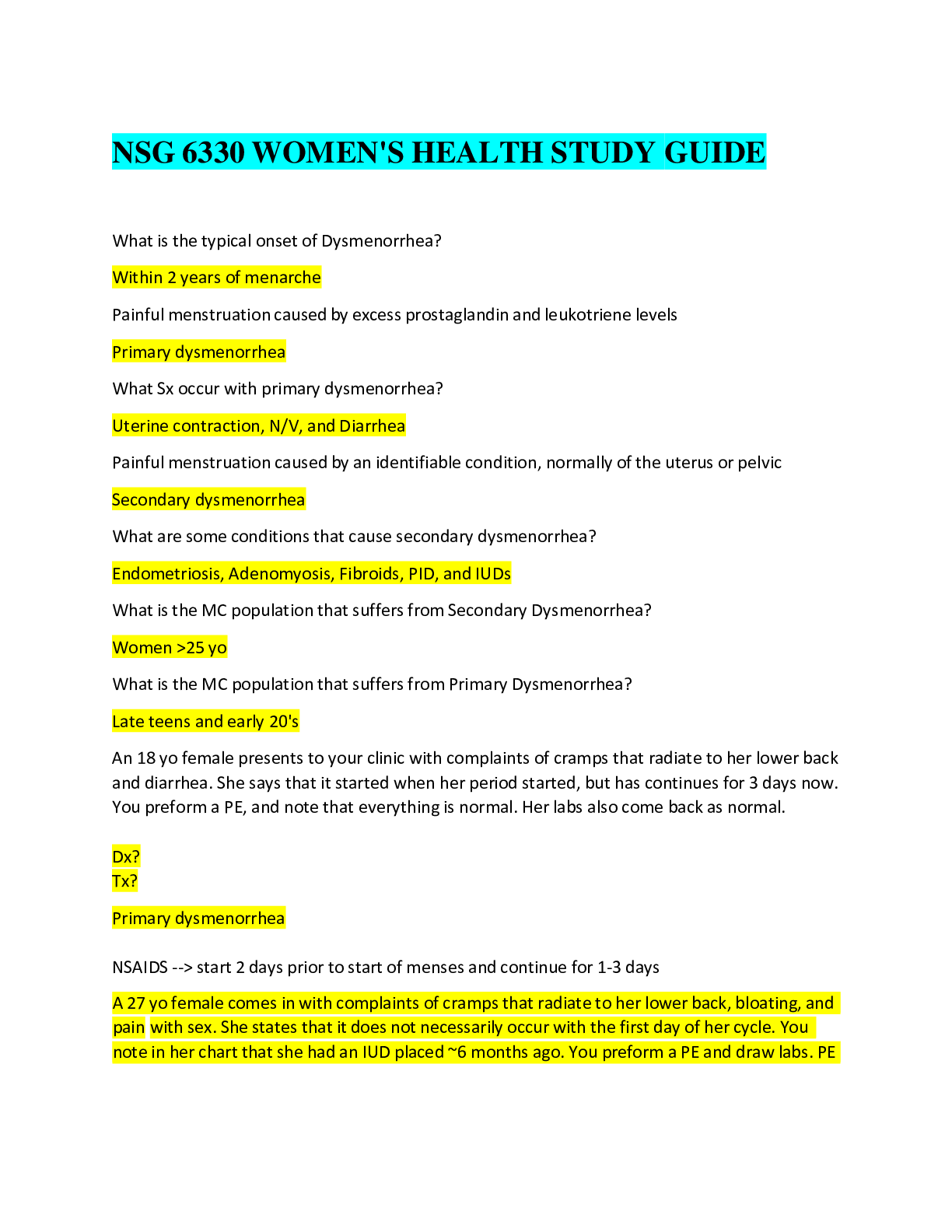
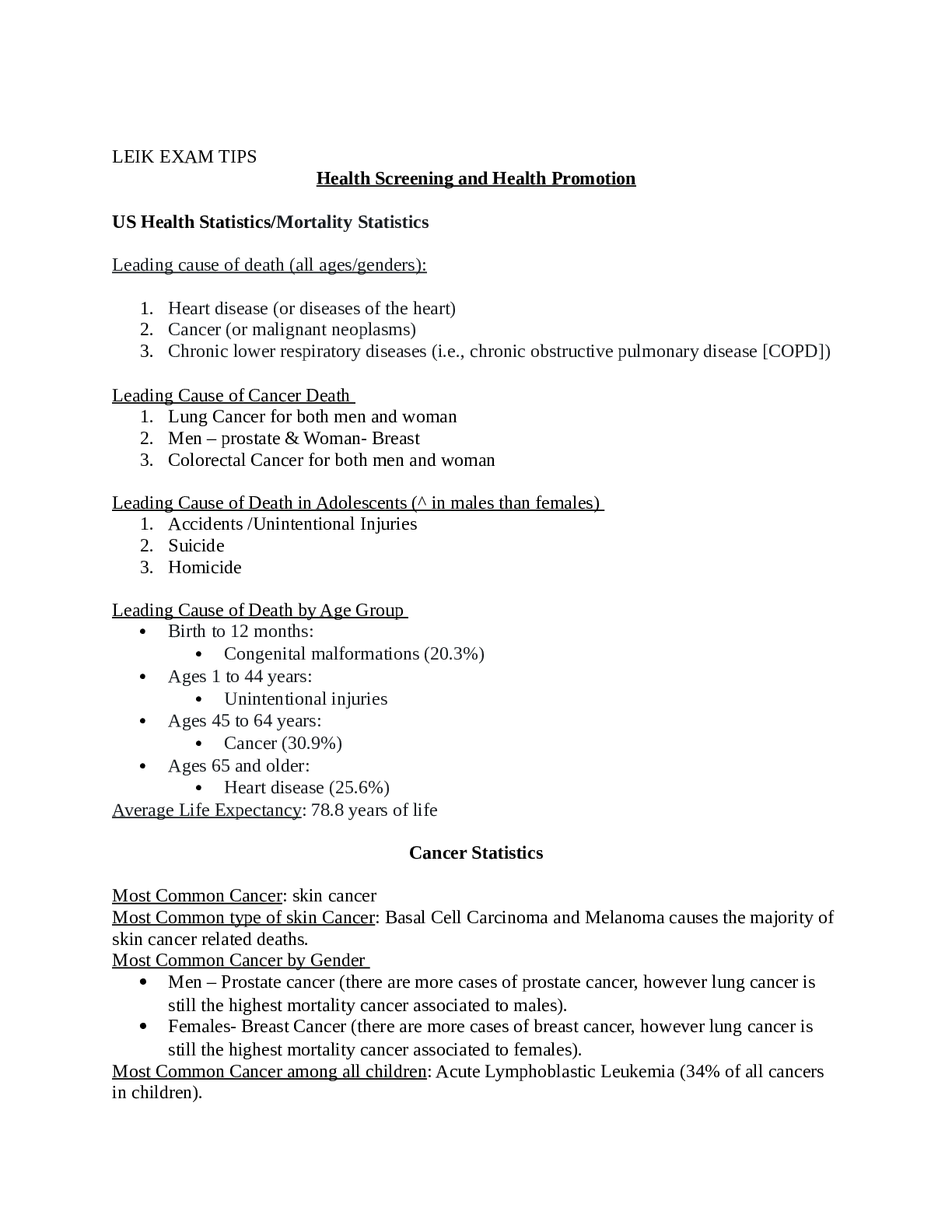

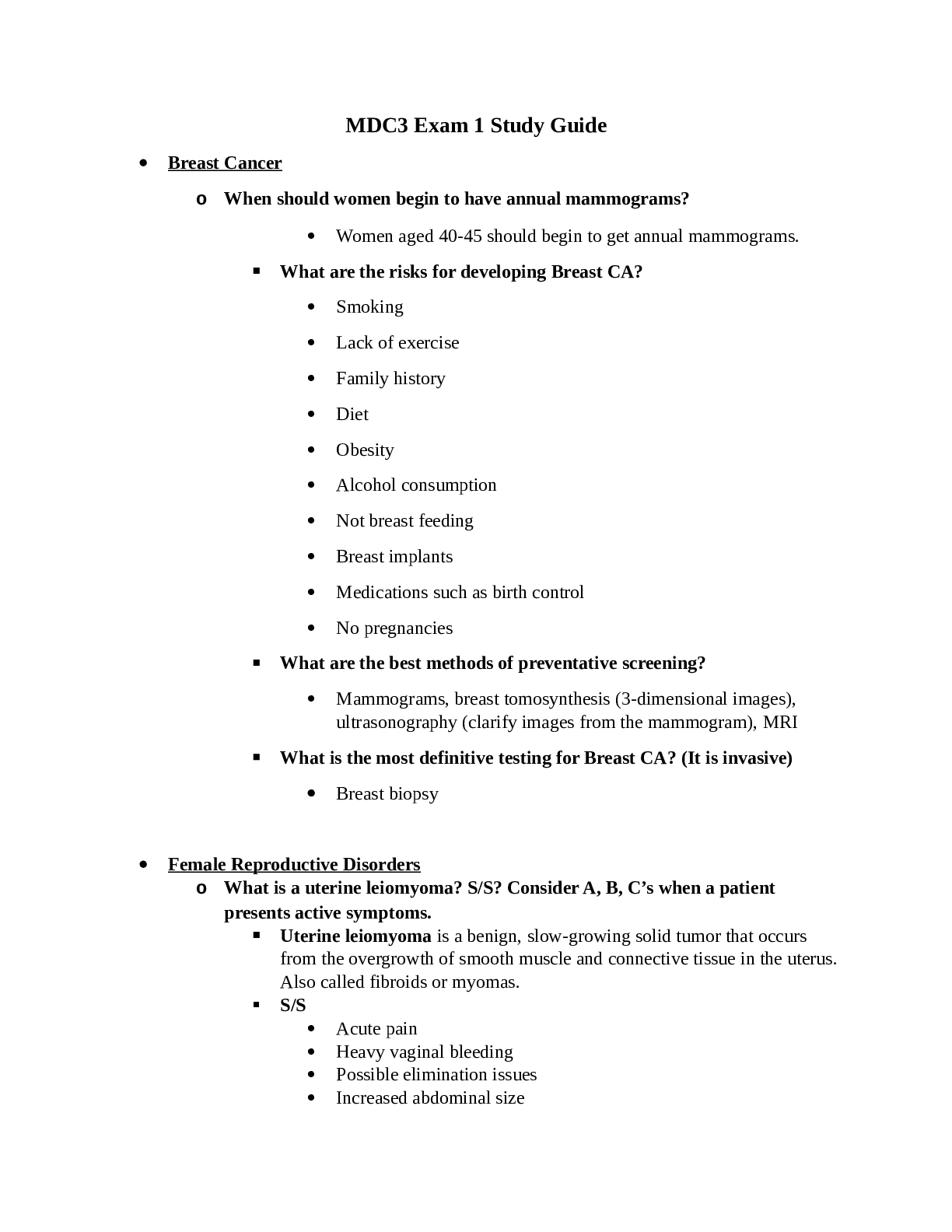
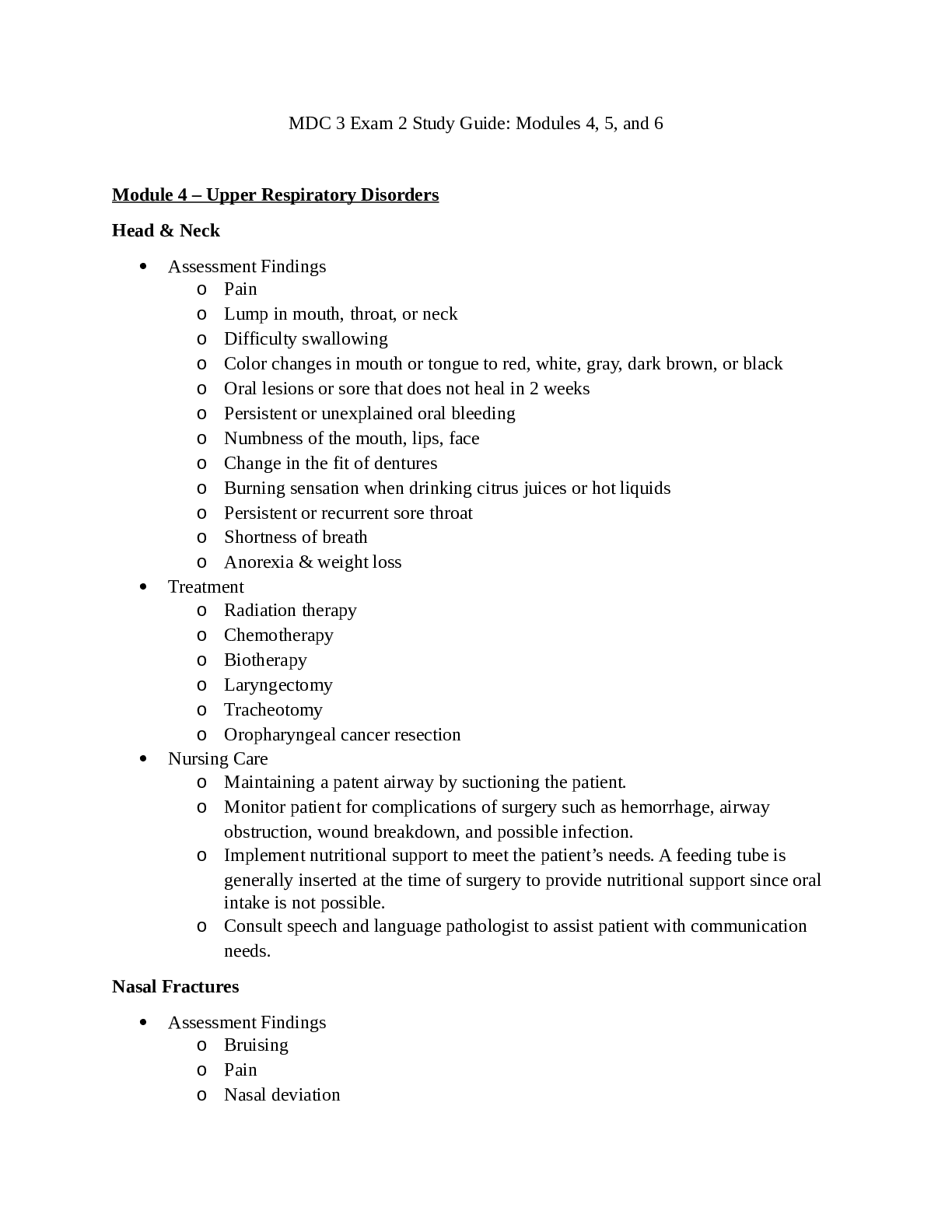
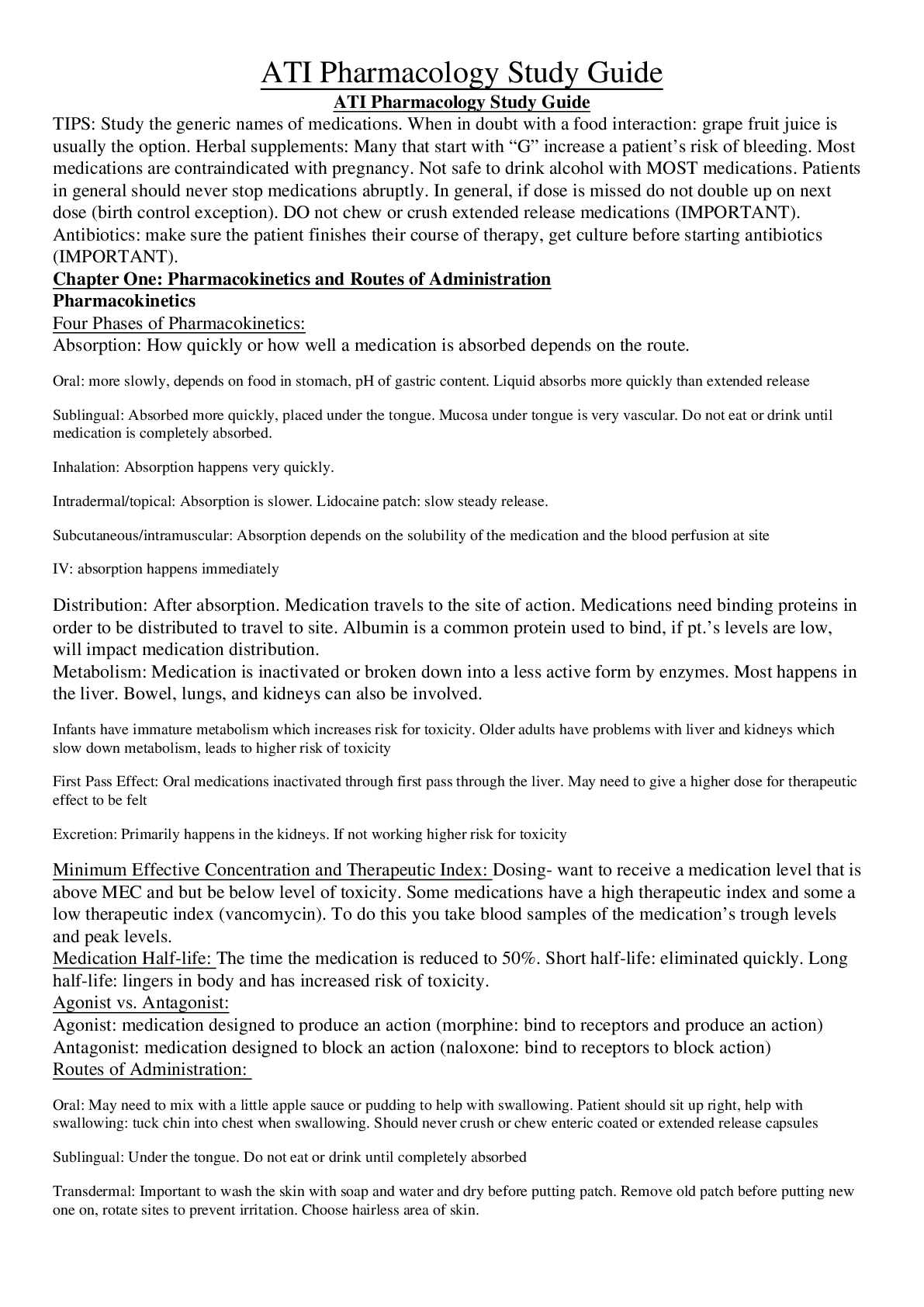

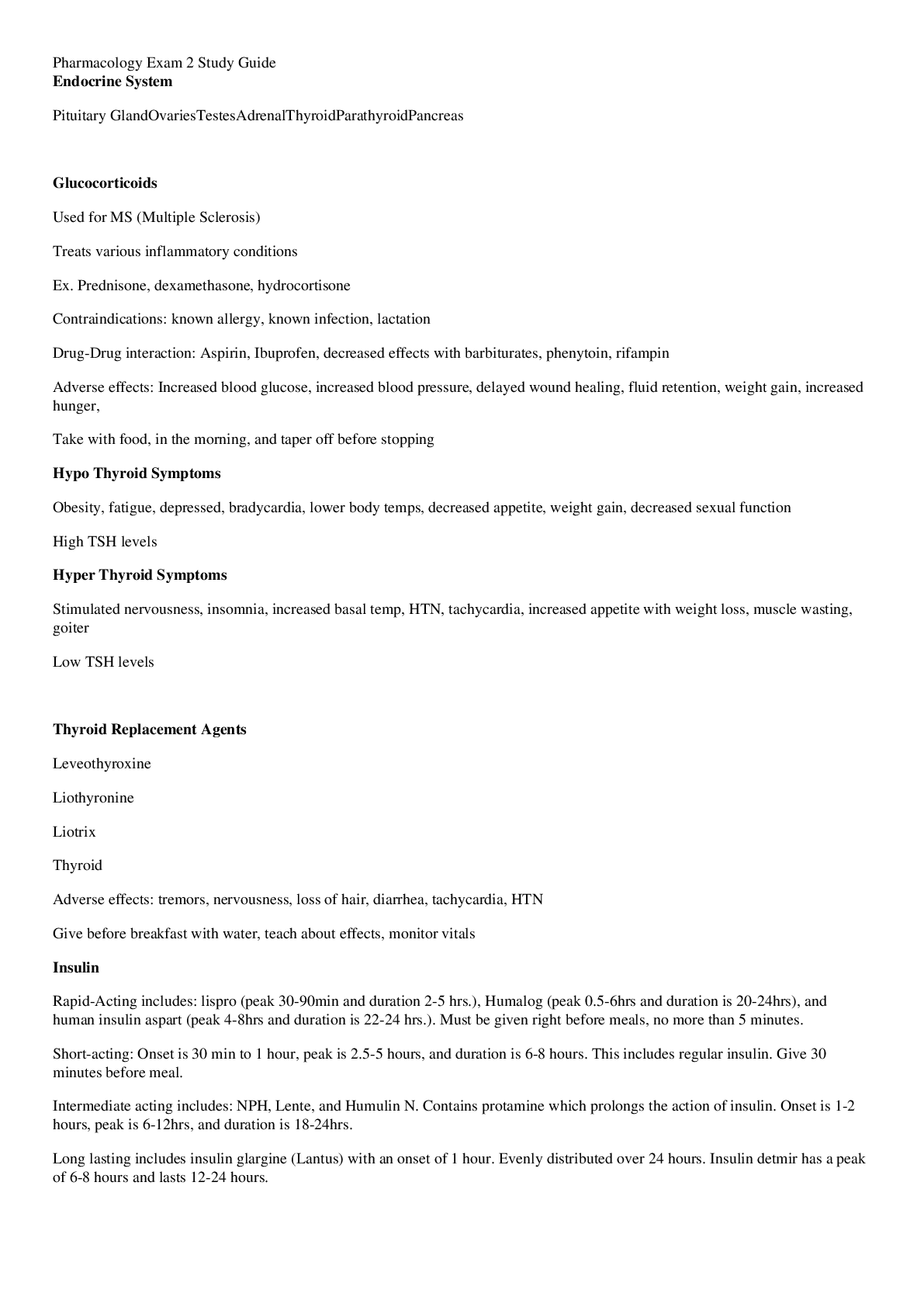
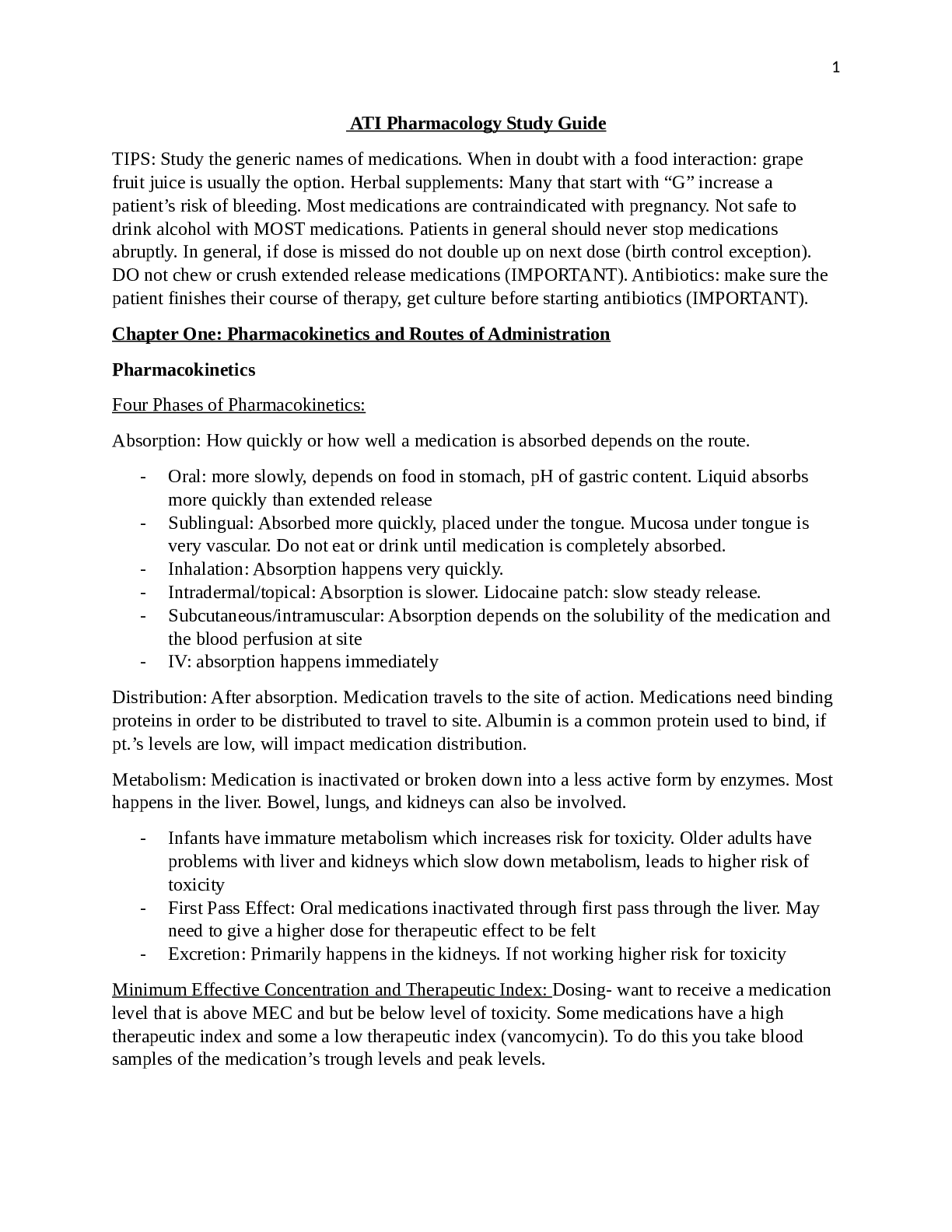

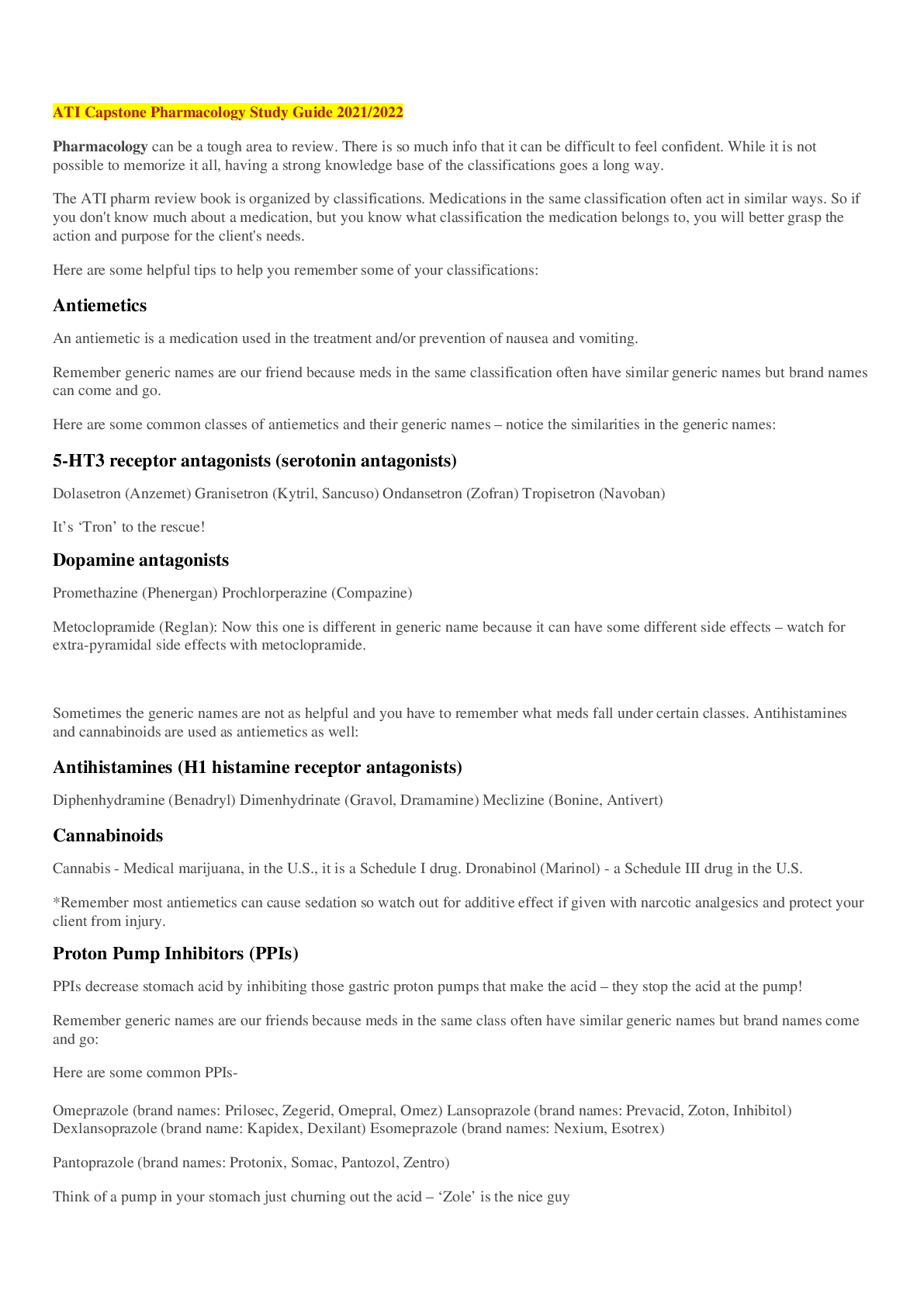

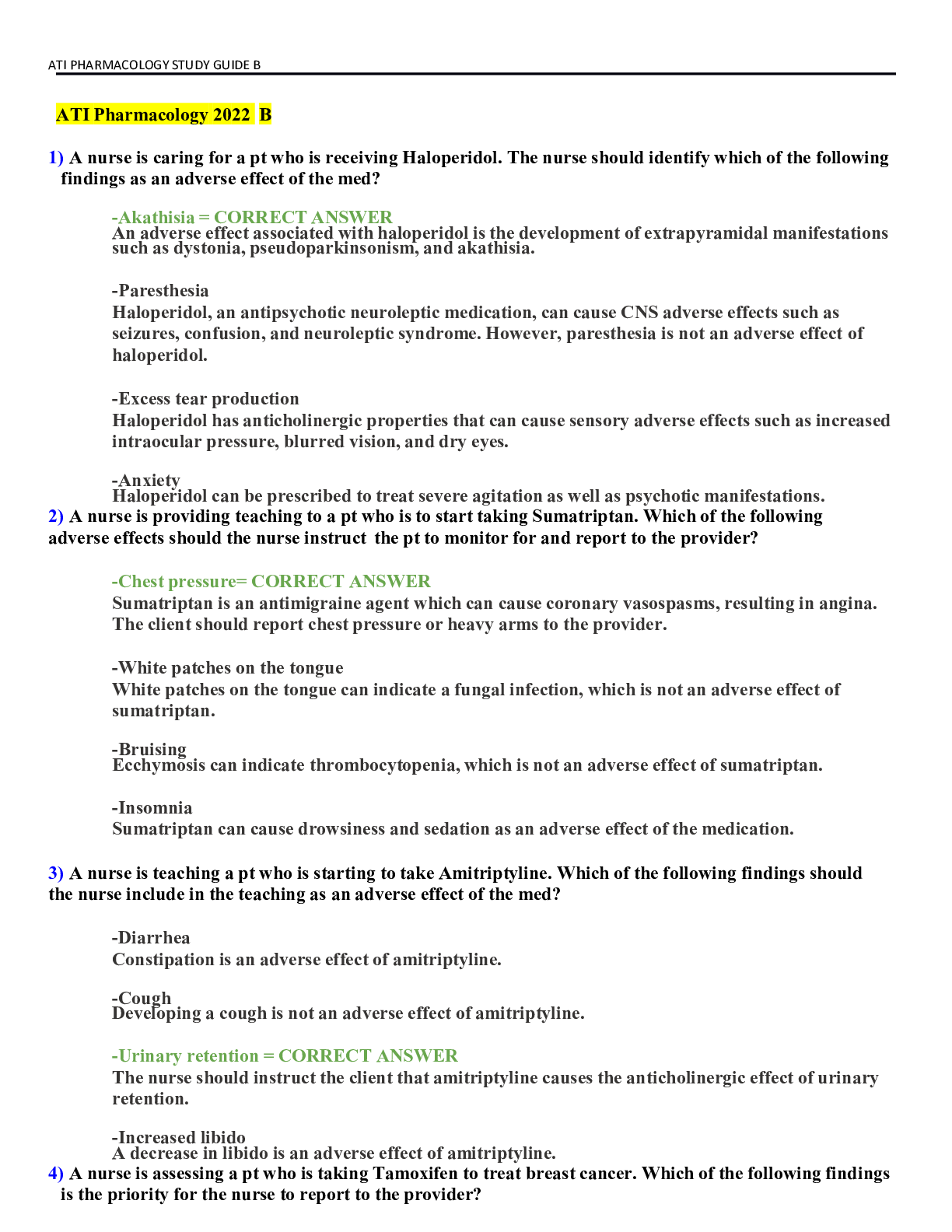
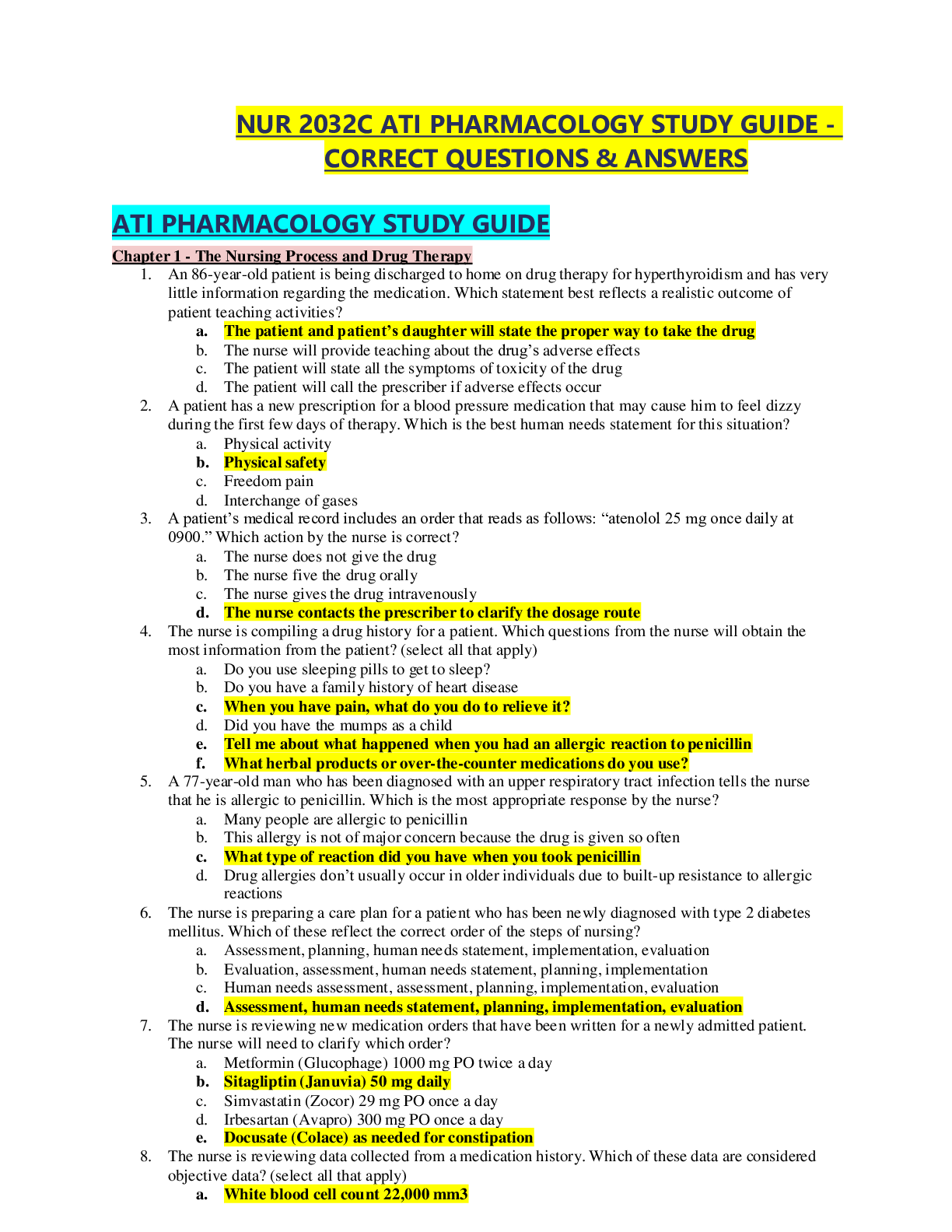
 (1).png)


